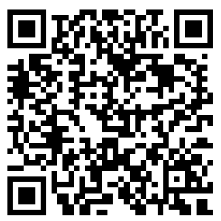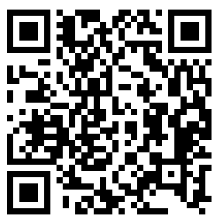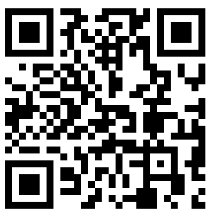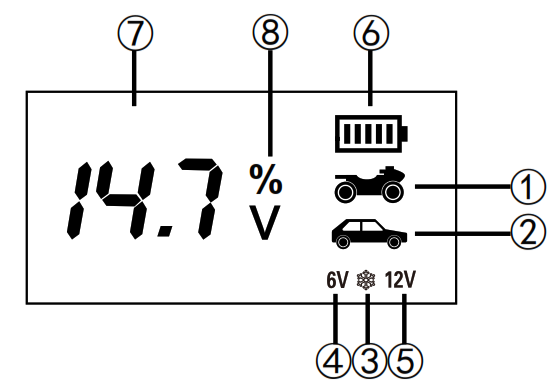 BATTERY CHARGEROPERATOR’S MANUALMODEL: HFZ04DV
BATTERY CHARGEROPERATOR’S MANUALMODEL: HFZ04DV
 https://www.amazon.com/stores/node/15276926011
https://www.amazon.com/stores/node/15276926011
 http://www.facebook.com/topacdc
http://www.facebook.com/topacdc
Please save these instructions. This manual contains important safety and operating instructions. Read all instructions and follow them with each use of this product.
IMPORTANT SAFETY INSTRUCTIONS
- SAVE THESE INSTRUCTIONS. This manual contains important safety and operating instructions. You may need to refer to these instructions at a later date.
- CAUTION. To reduce risk of injury, charge only wet cell, lead-acid, automotive type rechargeable batteries. Other types of batteries may burst causing personal injury and property damage.
- Do not expose charger to rain or snow.
- Use of an attachment not recommended or sold by the battery charger manufacturer may result in a risk of fire, electric shock, or injury to persons.
- To reduce risk of damage to electric plug and cord, pull plug rather than cord when disconnecting charger.
- Make sure cord is located so that it will not be stepped on, tripped over, or otherwise subjected to damage or stress.
- An extension cord should not be used unless absolutely necessary. Use of improper extension cord could result in a risk of fire and electric shock. If an extension cord must be used, make sure:a. That pins on plug of extension cord are the same number, size, and shape as those of plug on charger;b. That extension cord is properly wired and in good electrical condition;c. If the length of the extension cord is less than 15 meter, use a 0.75mm cord, If 30 meter – 1mm 2 .
- Do not operate charger with damaged cord or plug, replace the cord or plug immediately.
- Do not operate charger if it has received a sharp blow, been dropped, or otherwise damaged in any way; take it to a qualified serviceman.
- Do not disassemble charger; take it to a qualified serviceman when service or repair is required. Incorrect reassembly may result in a risk of electric shock or fire.
- To reduce risk of electric shock, unplug charger from outlet before attempting any maintenance or cleaning. Turning off controls will not reduce this risk.
- WARNING – RISK OF EXPLOSIVE GASESa. WORKING IN VICINITY OF A LEAD-ACID BATTERY IS DANGEROUS. BATTERIES GENERATE EXPLOSIVE GASES DURING NORMAL BATTERY OPERATION. FOR THIS REASON IT IS OF UTMOST IMPORTANCE TO READ THIS MANUAL AND FOLLOW THE INSTRUCTIONS EXACTLY EACH TIME BEFORE USING CHARGER.b. To reduce risk of battery explosion, follow these instructions and those published by battery manufacturer and manufacturer of any equipment you intend to use in vicinity of battery. Review cautionary marking on these products and on engine. 2 , 60 meter -1.5mm 2
PERSONAL SAFETY PRECAUTIONS
- Someone should be within range of your voice or close enough to come to your aid when you work near a lead-acid battery.
- Have plenty of fresh water and soap nearby in case battery acid contacts skin, clothing, or eyes.
- Wear complete eye protection and clothing protection. Avoid touching eyes while working near the battery.
- If battery acid contacts skin or clothing, wash immediately with soap and water. If acid enters eyes, immediately flood eyes with running cold water for at least 10 minutes and get medical attention immediately.
- NEVER smoke or allow a spark or flame in the vicinity of the battery or engine.
- Be extra cautious to reduce the risk of dropping a metal tool onto the battery. It might spark or short circuit battery or other electrical parts that may cause an explosion.
- Remove personal metal items such as rings, bracelets, necklaces, and watches when working with a lead-acid battery. A lead-acid battery can produce a short circuit current high enough to weld a ring or the like to metal, causing a severe burn.
- Use the charger for charging a LEAD-ACID battery only. It is not intended to supply power to a low-voltage electrical system other than in a starter motor application. Do not use a battery charger for charging dry-cell batteries that are commonly used with home appliances. These batteries may burst and cause injury to persons and damage to property.
- NEVER charge a frozen battery.
CONTROL PANEL
① The icon will indicate 2A Charge Rate, which is used for charging the small capacity batteries used in motorcycles, ATV, snowmobiles, personal watercraft, garden tractors and golf car.② The icon will indicate 4A Charge Rate, which is used for faster charging of small-to-large capacity automotive, marine, deep cycle, and farm tractor batteries.③ The icon will appear when selecting the mode of charging in cold state, which means the max charging voltage is 0.2V than usual.④ “6V” will appear when selecting the charge for the 6V batteries.⑤ “12V” will appear when selecting the charge for the 12V batteries.⑥ The icon will indicate the charging process.⑦ The numbers or characters will indicate the battery voltage or the error code.⑧ At first V will display on the screen indicating the detail voltage, and then change to % display indicating the percentage of charging.
MODE SELECTION BUTTONPress the Mode Selection Button to select one of the 6 charging modes.Mode 1: 6V 2A (Icon ① + ④ will appear)Mode 2: 6V 2A in the cold state (Icon ① + ③ + ④ will appear)Mode 3: 12V 2A (Icon ① + ⑤ will appear)Mode 4: 12V 2A in the cold state (Icon ① + ③ + ⑤ will appear)Mode 5: 12V 4A (Icon ② + ⑤ will appear)Mode 6: 12V 4A in the cold state (Icon ② + ③ + ⑤ will appear)
OPERATING INSTRUCTIONS
PREPARING TO CHARGEa. If necessary to remove the battery from the vehicle to charge, always remove the grounded terminal from the battery first. Make sure all accessories in the vehicle are off, so as not to cause an arc.b. Be sure the area around the battery is well ventilated while the battery is being charged. Gas can be forcefully blown away by using a piece of cardboard or other non-metallic material as a fan.c. Clean battery terminals. Be careful to keep corrosion from coming in contact with eyes.d. Add distilled water in each cell until battery acid reaches the level specified by the battery manufacturer. This helps purge excessive gas from cells. Do not overfill. For a battery without cell caps, carefully follow the manufacturer’s recharging instructions.e. Study all the battery manufacturer’s specific precautions such as removing or not removing cell caps while charging and recommended rates of charge.f. Determine voltage of battery by referring to car owner’s manual and make sure that output voltage is set at the correct voltage. If the charger has an adjustable charge rate, charge the battery initially at the lowest rate.
CHARGER LOCATIONa. Locate charger as far away from battery as output cables permit.b. Never place charger directly above battery being charged; gases from battery will corrode and damage charger.c. Never allow battery acid to drip on charger when reading gravity or filling battery,d. Do not operate charger in a closed-in area, or restrict ventilation in any way.e. Do not set a battery on top of charger.f. Locate the charger at least 18” above the floor.g. Do not place the charger where rain, snow, or other moisture could drip on it.
DC CONNECTION PRECAUTIONSa. Connect and disconnect DC output clamps only after setting any charger switches to off position and removing AC cord from electric outlet. Never allow clamps to touch each other.b. Attach clamps to battery posts and twist or rock back and forth several times to make a good connection. This tends to keep the clamps from slipping off terminals and helps to reduce risk of sparking.
FOLLOW THESE STEPS WHEN BATTERY IS INSTALLED IN VEHICLE. A SPARK NEAR BATTERY MAY CAUSE BATTERY EXPLOSION. TO REDUCE RISK OF A SPARK NEAR BATTERY:a. Position AC and DC cords to reduce the risk of damage by hood, door, or moving engine part.b. Stay clear of fan blades, belts, pulleys, and other parts that can cause injury to persons.c. Check the polarity of battery posts. POSITIVE (POS, P, +) battery post usually has a larger diameter than NEGATIVE (NEG, N, -) post.d. Determine which post of battery is grounded (connected) to the chassis. If negative post is grounded to chassis (as in most vehicles), see item “e”. If a positive post is grounded to the chassis, see item “f”.e. For negative-grounded vehicle, connect POSITIVE (RED) clamp from battery charger to POSITIVE (POS, P, +) ungrounded post of battery.Connect NEGATIVE (BLACK) clamp to vehicle chassis or engine block away from battery.Do not connect clamp to carburetor, fuel lines, or sheet metal body parts. Connect to a heavy gauge metal part of the frame or engine block.f. For positive-grounded vehicle, connect NEGATIVE (BLACK) clamp from battery charger to NEGATIVE (NEG, N, -) ungrounded post of battery. Connect POSITIVE (RED) clamp to vehicle chassis or engine block away from battery. Do not connect clamp to the carburetor, fuel lines, or sheet-metal body parts. Connect to a heavy gage metal part of the frame or engine block.g. When disconnecting charger, disconnect AC cord, remove clamp from vehicle chassis, and then remove the clamp from battery terminal.h. See operating instructions for length of charge information.
FOLLOW THESE STEPS WHEN BATTERY IS OUTSIDE VEHICLE. A SPARK NEAR THE BATTERY MAY CAUSE BATTERY EXPLOSION. TO REDUCE RISK OF A SPARK NEAR BATTERY:a. Check polarity of battery posts. POSITIVE (POS, P, +) battery post usually has a larger diameter than NEGATIVE (NEG, N, -) post.b. Connect POSITIVE (RED) charger clamp to POSITIVE (POS, P, +) post of battery.c. Position yourself and free end of cable as far away from battery as possible – then connect NEGATIVE (BLACK) charger clamp to free end of cable.d. Do not face battery when making final connection.e. When disconnecting charger, always do so in reverse sequence of connecting procedure and break the first connection while as far away from battery as practical.f. A marine (boat) battery must be removed and charged onshore. To charge it on board requires equipment specially designed for marine use.
AC POWER CORD CONNECTION INSTRUCTIONSThe plug must be plugged into an outlet that is properly installed in accordance with all local codes and ordinances.DANGER. Never alter AC cord or plug provided – if it will not fit outlet, have proper outlet installed by a qualified electrician. Improper connection can result in a risk of an electric shock.
LENGTH OF CHARGEThe following instruction will allow you to determine how long it will take to bring a specific battery to full charge.a. Test the battery for state of charger with a hydrometer or electronic percent-of-charge tester.b. Determine the size of the battery in Amp-Hour or Reserve Capacity. If the ratings are not printed on the battery, contact your local battery dealer for this information. These are the only ratings that can be used to determine length to charging time.c. Use the battery rating, the charge level of the battery, and amp setting to be used on the charger in the formula provided below.Amp Hour Rating of Battery × Percent of Charged Needed × 1.25 = Hours to Charge Amp Setting Selected On ChargerNOTE: The length of charge times are approximate and varies from the battery to battery. Always follow the battery manufacturer’s specific charging instructions.
CHARGINGNOTE: Before using the charger, please review all safety and connection directions. Failure to do so can damage battery and cause serious injury or death.• Connect the charger to battery per the operating instructions.• Connect the charger to AC outlet.• Select the appropriate charging mode for your batteries.• If the charger does not detect a properly connected battery, the Reverse Polarity Indicator LED will light or the Error Code will appear on LCD display until such a battery is detected. Charging will not begin while the Reverse Polarity Indicator LED is on or the error code appears. When the charging begins, the charging process Icon on LCD display will appear.•When charging is completed, unplug the charger from the AC outlet first and then disconnect the batteries with charger.
AUTOMATIC CHARGE STAGEAutomatic Battery Charger features 9-stage, high-efficiency charging technology, built-in Micro process control IC that ensures fast, safe and complete charging of serviceable batteries.

Automatic Micro Process Control Unit Charge:Stage 1 – Diagnosis: Analyze if the battery can accept a charge or not, and then prevent charging from proceeding on the a defective battery;Stage2- Desulphation: The charger can rescue most drained batteries with voltages up to a Min 1.5±0.5VStage 3 – Pre-charge: If the battery voltage is less than 12V, charge it at the smaller current, which will protect the battery better;Stage 4 – Soft start: Charge the battery to the maximum current gradually and never suddenly.Stage 5 – CC1/CC2/CC3 (Constant Current): The charger automatically adjusts the current according to the battery status in constant current, which benefits the battery for a long life;Stage 6- CV (Constant Voltage): The battery is charged to nearly full, and will top off at 14.6V DC;Stage 7 – Resting: The charger will cut off with full charged statement, and achieves the high energy efficiency;Stage 8-Recond: When it is fully charged and low to 12.8V within 2min, the charger will judge automatically.Stage 9 – Restoring: The charger monitors a fully charged battery automatically. If the battery falls below 12.8V DC, the charger will restart from stage 4 to stage7.
ADDITIONAL FEATURESa. REVERSE POLARITY PROTECTION The REVERSE POLARITY INDICATOR LED will light and the power will not be sent to output cables if a reverse connection is detected.b. SHORT CIRCUIT PROTECTIONThis protection is triggered if the charger detects less than 0.5V across the clamps, and no power will be sent to output cables. Refer to Error Code of “Er1” in the section of TROUBLESHOOTING ERROR CODES.c. OVER-VOLTAGE PROTECTIONWhen the charger is set to charge in a different voltage than the detected voltage of the battery, this protection will be engaged. Refer to Error Code of “Er1” in the section of TROUBLESHOOTING ERROR CODES.d. BATTERY DIAGNOSTICS FUNCTIONThe charger continuously monitors battery conditions and may report certain charging failures as fault codes. Refer to Error Code of “Er1” and “Er2” in the section of TROUBLESHOOTING ERROR CODES. Conditions that cause the errors include: if the battery voltage does not rise appropriately during the charging process (indicating a shorted cell) or if the maximum charge time has been exceeded, etc.e. BATTERY RECONDITIONING FUNCTIONIf a battery is discharged deeply, it could become sulfated and unable to accept a charge.Reconditioning Function may help reverse the effects of sulphation and restore a battery’s ability to accept a charge. If the charger detects a sulfated battery, it will automatically activate Battery Reconditioning Function. If successful, normal recharging will resume after the battery is desulphated. If unsuccessful at desulphurating the battery, refer to Error Code of “Er2” in the section of TROUBLESHOOTING ERROR CODES.f. OVERHEAT PROTECTIONThe charger is designed to decrease the charging current and even shut itself off if overheating is detected. Once the charger cools down, it will resume charging automatically. Refer to Error Code of “Er3” in the section of TROUBLESHOOTING ERROR CODES.g. MODE-SETTING MEMORY FUNCTIONThe microprocessor inside the charger has a mode-setting memory function, which means the charger can remember the mode the users set last time, and if the same mode this time just press the mode button to start charging. This function can erase the users’ worry about forgetting the setting for their owner batteries and shorten the setting time for the users’ convenience. The housing of the charger is water-resistant (IP 65). The first digit ”6″ means protection of humans against access to dangerous parts by means of a wire – dust-proof protection. The second digit ”5″ means the protection against the stream of water (12,5 l/min) poured on the housing from any direction. IP 65 apply to house only, not clamps and AC power lead.
MAINTENANCE INSTRUCTIONS
This charger requires minimal maintenance. As with any appliance or tool, a few common-sense rules will prolong the life of the battery charger.ALWAYS BE SURE THE CHARGER IS UNPLUGGED BEFORE PERFORMING ANY MAINTENANCE OR CLEANING.1. Store in a clean, dry place2. Coil up the cords when not in use.3. Clean the case and cords with a slightly damp cloth.4. Clean any corrosion from the clamps with a solution of water and baking soda.5. Examine the cords periodically for cracking or other damage and have them replaced if necessary.6. WARNING: All other services should be done by qualified personnel only.
TECHNICAL DATA
Model : HFZ04DVInput: 120VAC 60HzOutput: 6VDC 2Amp, 12VDC 2/4Amp
TROUBLESHOOTING ERROR CODES
| code | Condition | Possible Cause |
Solution |
| Erl | The battery voltage is less than 0.5V before charging. | The battery is defective. | Replace the battery. |
| The charge does not begin. | The battery clamps are disconnected with the battery.The battery clamps are connected to each other. | Connect the battery firmly and correctly. | |
| TThe battery voltage is not matched with the selected mode. | Confirm that battery voltage is matched with the mode. | ||
| Er2 | The battery voltage is 0.5V – 1.5V before charging. | The battery is defective. | Replace the battery. |
| The battery is voltage i less than 11V after 4 minutes of charging. The battery is not full charged after a 24-hour charge. | The battery is defective. | Replace the battery. | |
| A load may be connected to the battery. | Disconnect the load and attempt to charge again. | ||
| The charge current is too low. | Select a higher charge rate. | ||
| The battery voltage is less than 12V in 2 minutes after full charge. | The battery is sulfated beyond reconditioning. | Replace the battery. | |
| Er3 | The temperature of the charger is too high. | High ambient tempera- lure. | Ensure adequate ventilation. The charger will resume charging after cooling. |
[xyz-ips snippet=”download-snippet”]



